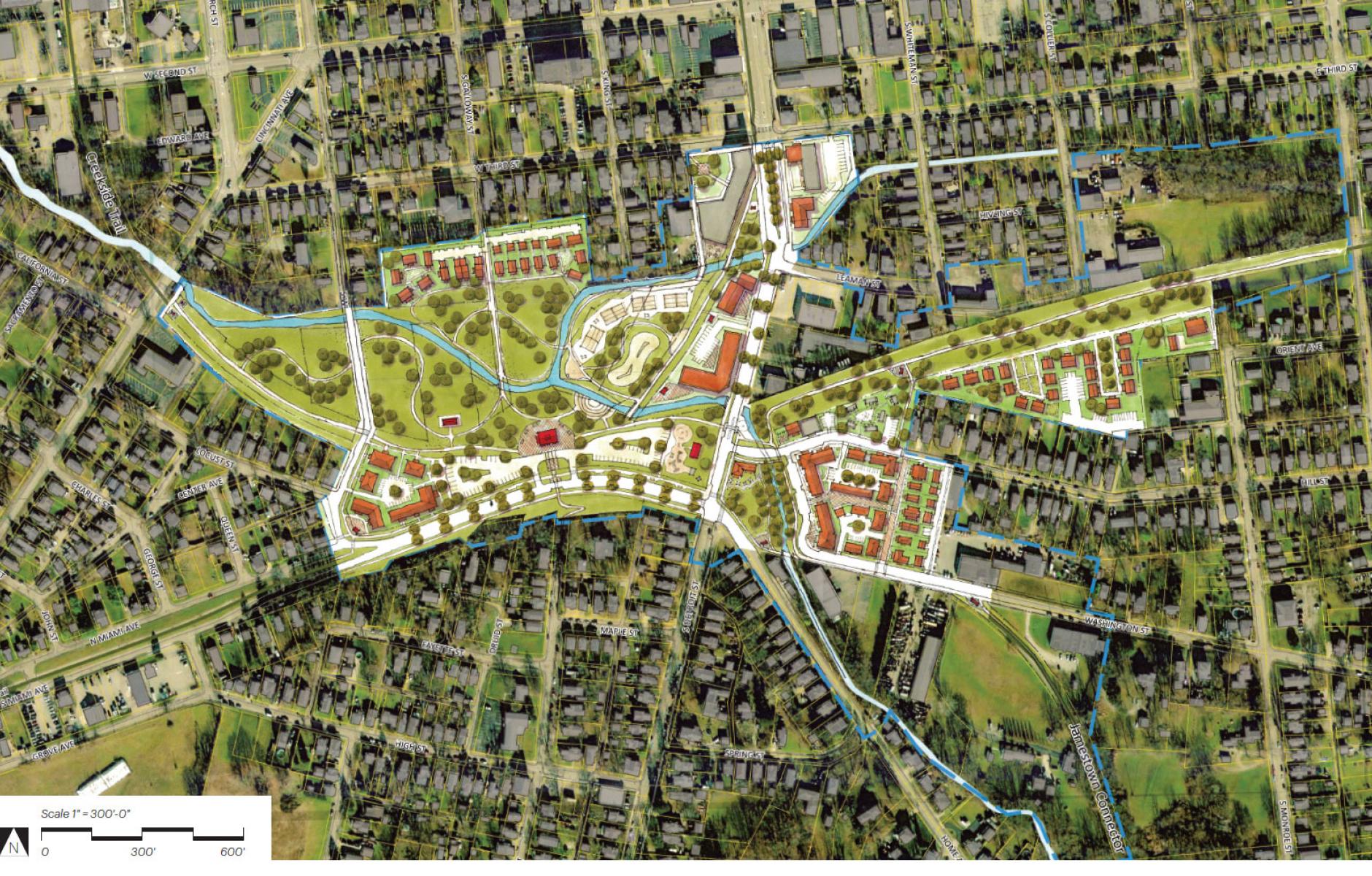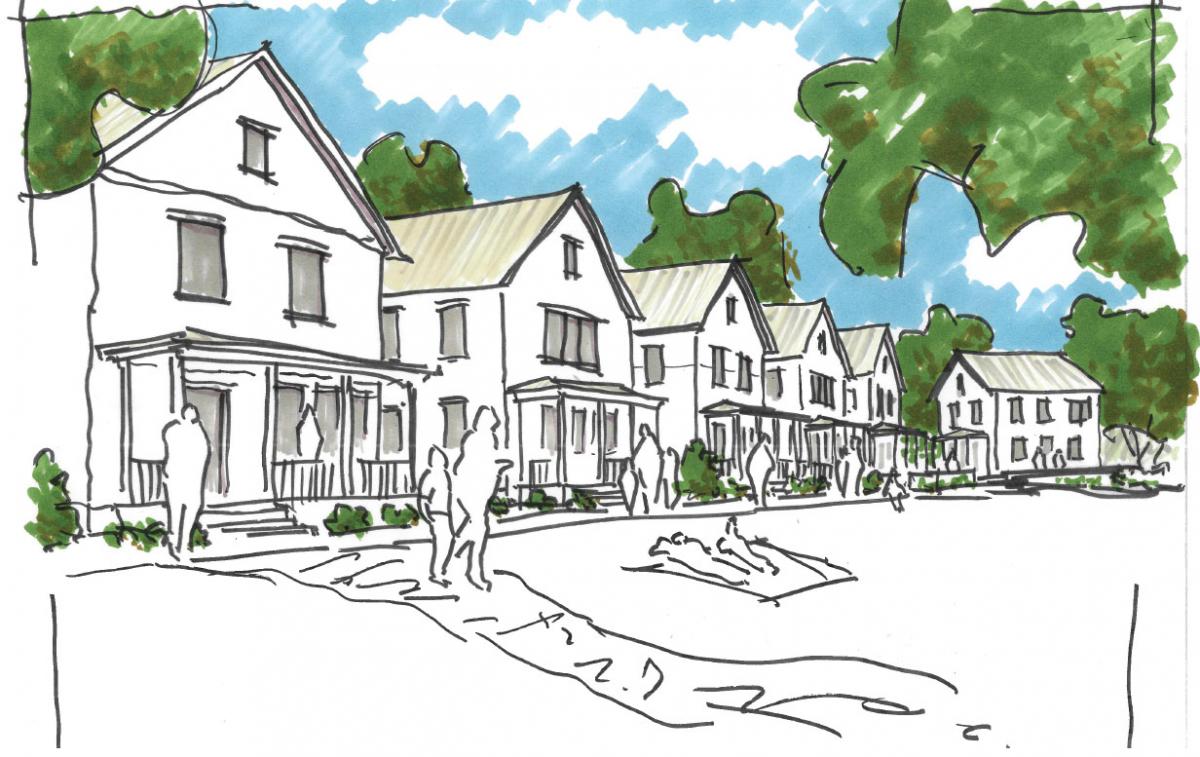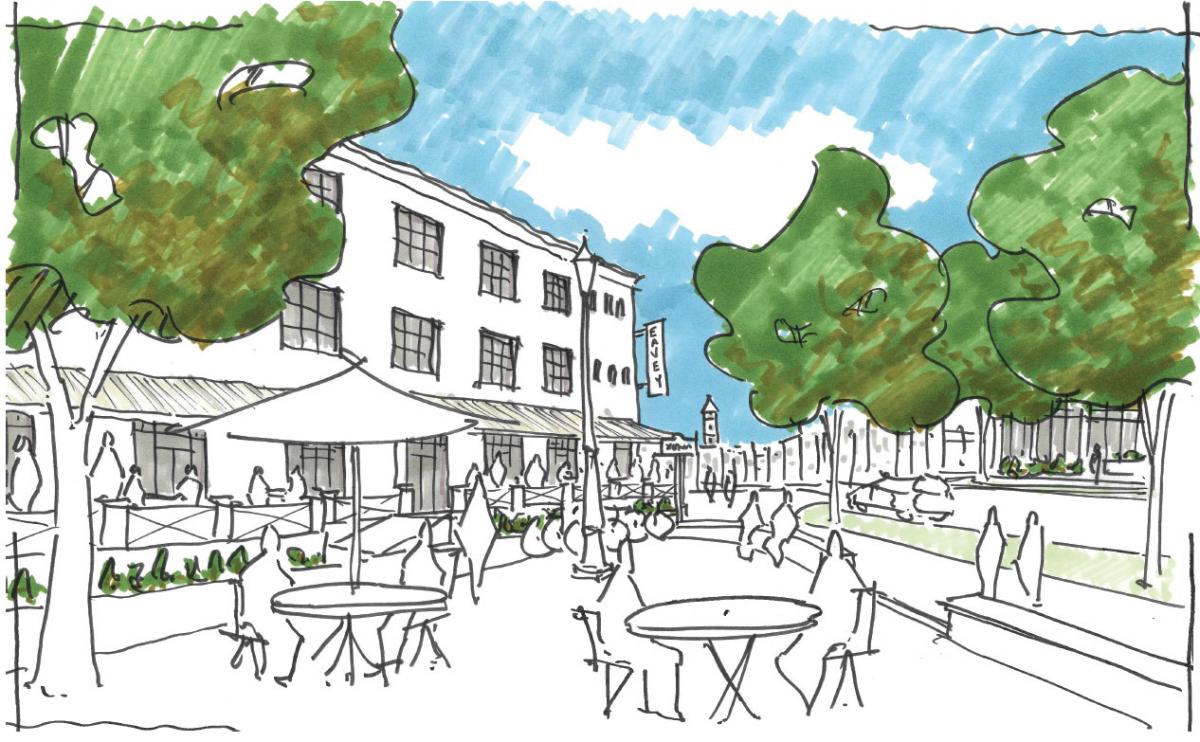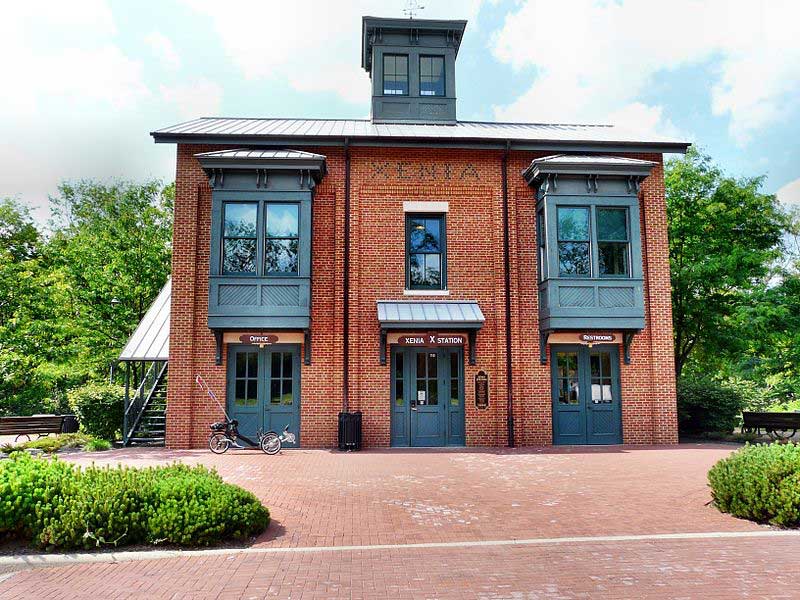
Leveraging a trail hub for a thriving downtown
The small city of Xenia, Ohio, has a unique asset: multiple long-distance bicycle trails that converge around Xenia Station, a historic hub of former rail lines that attract visitors from far and wide. The Hub District is only a few blocks from the heart of downtown.
A design team co-sponsored by CNU recently explored opportunities for the 70-acre Xenia Hub District, which includes a park, replica station, and surrounding streets and blocks in the city of 25,000 people—15 miles east Dayton and 50 miles northeast of Cincinnati.
The work is part of a Legacy Project, leveraging CNU’s planning and design expertise to make a long-term impact on the host region of its annual Congress—CNU 32 will take place May 15-18 in Cincinnati. The project is led by Opticos Design and the City, supported by J. Griffin Design and Zimmerman/Volk Associates (ZVA), with extensive participation of citizens and stakeholders over a three-day charrette.
The Hub District covers a well-defined neighborhood-scale area around Xenia Station, which includes the former hub of rail lines, industrial sites, and housing to serve the rails. The area has strong architectural character but many vacant lots and buildings. The team created a plan for stitching the neighborhood together with streetscape improvements, pedestrian connections, expansion of the existing Xenia Station green space, and missing-middle-scale development around the Hub.

The Hub District's housing market is substantial, as validated in a study by the market research firm ZVA. The analysis found the potential for 600-700 new units over five years. Key demographics are younger individuals and couples and older residents, with both groups interested in accessing the trail amenities and taking advantage of the walkability and proximity to downtown.
Eight or nine housing opportunity sites are available in the Hub District. The team tested varying levels of housing intensity and asked the community for input on the scale and character of the housing. Development around the Hub is integral to growing and expanding the city’s core, less than a five-minute walk away.
Additionally, the project involves reimagining the adaptive reuse of an 80,000-square-foot historic warehouse, the Eavey Building, as a living, co-working, and/or commercial space that can enliven the Hub District and provide a gateway into downtown.

The Hub’s connections and amenities are key to the project. Rail-to-trail conversions provided the city with a unique asset: four long-distance bicycle and multipurpose trails that converge at the Hub with five trailheads, which attract 60,000 visits a year. The Hub connects the city to Dayton, Cincinnati, Columbus, and other destinations. The trails converge on a park surrounding the old station. The plan explored ways to activate the park, enhancing it as a regional civic space and attraction. A section of the park has to be capped to mitigate pollution from former industry. Active uses over the cap, such as a skate park, amphitheater, and pickelball courts, were explored.
The streets surrounding the Hub and Xenia Station are automobile-oriented, making it difficult for bikers and pedestrians to cross into the area. The team explored incremental streetscape improvements to slow traffic and provide bike facilities on several streets, including Detroit Street, which leads to downtown. A re-striping of Detroit Street in a road diet would make it more pedestrian-friendly.
The project could be built in phases, Jennifer Settle of Opticos explained. Improving and remediating the park is part of phase one, with tactical improvements to Detroit Street. These changes could begin to create an identity around the Hub District. Phase two could be centered around the adaptive reuse of the warehouse and underutilized parcels. Phase three would be transforming the area, including the whole station park and building housing on opportunity sites in the district.
The goal is to “build a thriving mixed-use district that is connected to and supports downtown Xenia and the remainder of the community,” Settle says.





